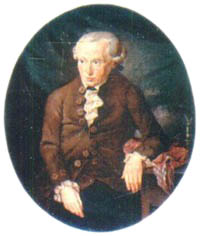
Recent News
- No News
This is the home page of G. J. Mattey’s Philosophy 175, Kant, for Winter Quarter, 2021.
The Course
Philosophy 175 focuses on Kant’s metaphysics, as expounded in his monumental Critique of Pure Reason (first edition 1781, second edition 1787). We will read selected passages from that book, as well as from the companion Prolegomena to any Future Metaphysics and Kant’s letter to Marcus Herz of 1772.
General Catalog Course Description
Lecture/discussion—4 hours. Prerequisite: course 22 recommended. Immanuel Kant’s Critique of Pure Reason and related writings. Topics include the nature of human cognition, space and time, a priori concepts, substance, causality, human freedom, and the existence of God.
The Topic
Kant was educated in the tradition of German metaphysics, which traces its origins to the seventeenth century philosopher G. W. Leibniz. After having worked within this framework, Kant came to believe that before metaphysics can proceed legitimately, it must establish its credentials. Thus his fundamental question became, “How is metaphysics possible as science?” Kant held that this question should be answered by a critical examination of the cognitive part of the human mind, including “sensibility,” imagination, understanding, and reason. The result of Kant’s examination was to confine metaphysics to the realm of experience through sensibility and the understanding, while proscribing its extension to would-be objects of pure reason: the soul, the totality of the universe, and God.
The Icon
The icon appearing on your browser is a partial drawing of a triangle. Kant used the example of the construction of a triangle in several places in the Critique of Pure Reason. Perhaps this passage from the Preface to the second edition most easily shows its importance.
When the isosceles triangle was first demonstrated, something dawned on the man who did so. (He may have been called Thales, or by some other name.) He found that what he needed to do was not to investigate what he saw in the figure, nor—for that matter—to investigate the mere concept of that figure, and to let that inform him, as it were, of the figure’s properties. He found, rather, that he must bring out (by constructing the figure) the properties that the figure had by virtue of what he himself was, according to concepts, thinking into it a priori and exhibiting. And he found that in order for him to know anything a priori and with certainty about the figure, he must attribute to this thing nothing but what follows necessarily from what he has himself put into it in accordance with his concept. (Bxi-xii, Pluhar translation)
The notion that a priori knowledge is the result of what we “put into” the objects of our knowledge is the basis of Kant’s attempted rehabilitation of metaphysics.
